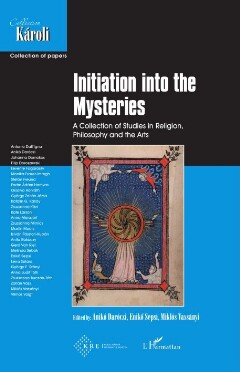Oldal 280 [280]
LÉNA SZILÁRD
In the first part of the novel, in harmony with this model, Ivanushka Bezdomny
is brought to the beginning of a three-stage process of initiation which arches
through the book: via purgativa, via illuminativa, and via unitiva.
From the perspective of symbols and signs, the following scenes are of
great significance:
The house number 13, the flat number 47. Here Bulgakov plays by linking
the “rare” and the “obvious.” The number 13 is a well-known symbol in almost
all cultures, but the symbolic meaning of the number 47 is not familiar to
everyone. It is a hint at the postulate of Euclid, which has a special meaning
in Freemasonry.
Details of Soviet life, such as the dark and narrow corridors of the
communal apartment 47 and the naked woman in the bathtub, who tries to
seduce the man who unexpectedly turns up, can be understood as the first
test on the road of initiation. It is a well-known element in the Egyptian type
of initiation, where the stripped “Nubian” beauty represented a moral trial:
he who chose his way to her (and not the other corridor) would immediately
fall underground and die. Bulgakov’s Ivanushka was not seduced. He kept
chasing Woland with a paper icon on his breast, which he had picked up in
the kitchen, and then rushed to the Moscow River. This can be understood as
an acting-out of the following steps of initiation:
Submersion in water in its varying forms is an act characteristic of
the majority of rituals: In a carnavalised depiction, Bulgakov shows Ivanushka
bathing (in the Moscow River). As noted before, the surname of the hero,
Ponyrev, refers to this indispensable part of almost any initiation rite. However,
the description of Ivanushka descending the stones of the amphitheatre draws
on the Egyptian, not the Eleusinian version.
The subsequent “loss of clothes” (which were stolen) marks a very important
moment in the Masonic rite. Untidy clothes symbolize the confusion of
the uninitiated in approaching the Temple. At the same time, since clothing
represents the cover outside, losing it symbolizes the disintegration of
the outer shell. Following this, the stages of “disintegration as the death of
the outer shell” are represented by descent. In The Master and Margarita, this
descent is expressed metaphorically as Ivanushka descends through the bars
into the hell of the restaurant, which can be understood as the depths of the
earth. One recalls the acronym used in the insignia of the alchemists’ guild:
“V.LT.R.LO.L.U.M.” This was a reference to the Latin phrase “Visita Interiora
Terrae Rectificando Invenies Occultum Lapidem Veram Medicinam,” which
means, “Visit the interior of the earth, and by rectifying you will find the
hidden stone, which is the true medicine.”
And, finally, concluding the phase of preparation, Ivanushka meets
the Master in the psychiatric hospital (Chapter 13). The depiction of this
meeting reconstructs the rules of the Freemasonic code, and it is precisely in
+ 278 ¢
Daréczi-Sepsi-Vassänyi_Initiation_155x240.indb 278 6 2020. 06.15. 11:04:24

